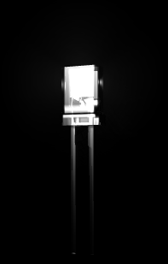
| |
 |
![]()
 The following tables are based on tables by lighting specialist William H. Gehrmann, in Evaluation
of Artificial Lighting (in Reptile Medicine and Surgery, 1996, edited by Douglas Mader DVM):
The following tables are based on tables by lighting specialist William H. Gehrmann, in Evaluation
of Artificial Lighting (in Reptile Medicine and Surgery, 1996, edited by Douglas Mader DVM):
Representative Light Sources and their Principal Types of Radiation Source
- Sun
- UVB 290-320 nm, UVA 320-400 nm, Visible 400-700 nm, Infrared 700 nm
- Incandescents (frosted, reflector floods, spots, halogen lamps)
- UVA 320-400 nm (low levels), Visible 400-700 nm, Infrared 700 nm
- Fluorescents: Chroma 50, Colortone 50, Design50, Cool White, Warm White
- Visible 400-700 nm UVB 280-320 nm (low levels), UVA 320-400 nm (low levels), Visible 400-700 nm
- Plant Lights
- Emphasize red and blue spectrums within Visible 400-700 nm
- Blacklights (BL)
- UVB 290-320 nm (low levels similar to Vitalites), UVA 320-400 nm
- Blacklight Blue (BLB Same as BL but with less blue light emitted)
- Reported harmful to eyes
- Sun lamps
- High levels of UVB causes skin cancer, cataracts, etc.
- High Intensity Discharge Mercury, Metal Halide
- Visible 400-700 nm, Infrared 700 nm; UVA and UVB are shielded due to extensive damage to skin and eyes caused by such high intensity
Transmission of UV Radiation through Various Materials
Window glass single thick 785 Acrylite GP acrylic 0.635 cm 60 Acrylite OP-4 acrylic .318 cm 8979 UV-T Plexiglas .635 cm 8964 Cellulose triacetate 6730 Galvanized mesh .318 cm (0.13") 6771 Galvanized mesh 1.270 cm (0.5") 8283
Note: graphic by Michel.